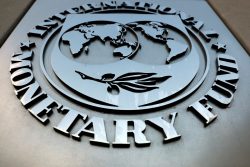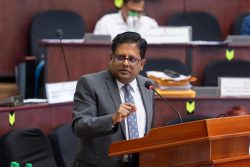In this week’s column I shall conclude the discussion of the underground economy in Guyana by highlighting some of its crucial features. These are important for readers to bear in mind whenever they are evaluating the recent performance and/or prospects facing Guyana’s economy.
Strict con struction
struction
The first of these is that I have put a very strict construction on what is represented by the underground economy in today’s circumstances. In my recent columns this term has covered three sets of related activities. One is those economic transactions which are deliberately unreported by economic agents because they are illegal and criminally-sourced. Of course in order to qualify the transactions must take place within the legal jurisdiction of Guyana. Another set refers to those transactions for which economic agents deliberately evade the payment of taxes, especially those due on income and wealth. However, both the income and wealth referred to here may or may not have been lawfully acquired. The final set of activities is rooted in the deliberate intent to circumvent and defraud the regulatory authorities. Here again the activity may or may not have been lawful. For example, it could be downright illegal as in the case of narcotics trafficking or trafficking in persons. Or, it could be legal, as in the case of legitimate gold-mining, but forms part of the underground economy because the mined gold is not declared to the lawful authority (Gold Board) but instead is smuggled out of the country.
From the above description it is clear that I am not including in the underground economy what economists usually refer to as the traditional informal sector. Typically, this informal sector would represent, for example, transactions such as small farmers’ sale of part of their produce in local markets and their not declaring the income earned to the tax authorities. Or, indeed it would cover transactions engaged in by non-farming households, like the provision for payment of repair and maintenance services, which are also not reported as income to the tax authorities. Readers can no doubt supply several other transactions of a similar informal nature which do not pass through the market and thus pay the requisite taxes.
Drivers of change
The second crucial feature readers should note is that since the underground has been first studied in Guyana there have been four major drivers behind its expansion. In the 1960s and very early 1970s almost all of the sector could be attributed to what can be described as the informal economy, which is now no longer of major consequence. Indeed I have dropped this feature from consideration of the present underground economy.
From the mid-1970s to the end of the 1980s the underground economy grew rapidly, mainly in reaction to the statist/commandist policies, which were being pursued by the PNC administration at that time. These policies had included import licensing and prohibitions, export licensing, and very strict controls on the ownership, sale and purchase of foreign exchange. The resulting shortages led to enormous black markets for scarce items and in particular foreign exchange. The size of the underground economy peaked and one estimate at that time, which was referenced last week, had put it as high as 99 per cent of the official GDP (Thomas, 1989)!
With the introduction of the Economic Recovery Program (ERP) in 1989 and the accompanying liberalization of the economy, the regulations-induced shortages disappeared. Thus import restrictions were removed and a free market for foreign exchange thrived. Shortages and scarcities could no longer be drivers of the underground economy. What then emerged was that tax evasion and regulatory non-compliance became the main drivers of the underground economy during this period. This was encouraged by the norms of illegality, which had become a deep-seated feature of the culture of the entrepreneurial class, spawned in the period of evading and manipulating its way through the massive restrictions and extensive and intrusive state intervention in the economy during the mid-1970s to the late 1980s. The period of rapid liberalization that followed subsequently, lasted from the end of the 1980s to the end of the 1990s.
While the drivers of tax evasion and regulatory non-compliance have continued to be important in the 2000s, to this has been added the powerful driver of organized crime. This aspect of the underground economy I have labelled the phantom economy in earlier columns. Its principal activities are narcotics trafficking, trafficking in persons (TIP), arms smuggling and their associated money laundering.
Why research
The question which readers may want answered at this stage is, what is to be gained by researching the underground economy in Guyana. Several benefits spring readily to mind, but I have space in this column only to refer to two of these. First and foremost to my mind is that it provides the best proxy indicator of the size and influence of organized crime in Guyana’s economy. The underground economy is clearly not made up entirely of organized criminal activity but an estimated range for this is 25 to 75 per cent of the estimated range for the underground economy in relation to official GDP. This seems quite plausible for Guyana and it would indicate a minimum size of US$150 million to a maximum of US$900 million.
A second benefit is to determine how the unreported underground economy behaves in relation to the official reported economy; this would be of immense value to policy makers.
The latest study by Pasha and Jourdain-Stephen finds a strong correlation between movements in the underground and official economy. As readers would know correlation is not causation. The question which they then investigated is, what is the most likely direction of movement in the two figures? Statistically, what they found was a counter-cyclical relation. By this they meant that growth in the official economy is accompanied with contraction in the unreported underground economy and by parity of reasoning contractions in the official economy are associated with growth in the underground economy. Using what is termed as the Granger-causality test the direction of movement found is from the official to the underground economy and not the other way around (that is, not from the underground to official economy).
If the above holds true we can expect that as the official economy expands the size of the underground economy in Guyana will diminish.









